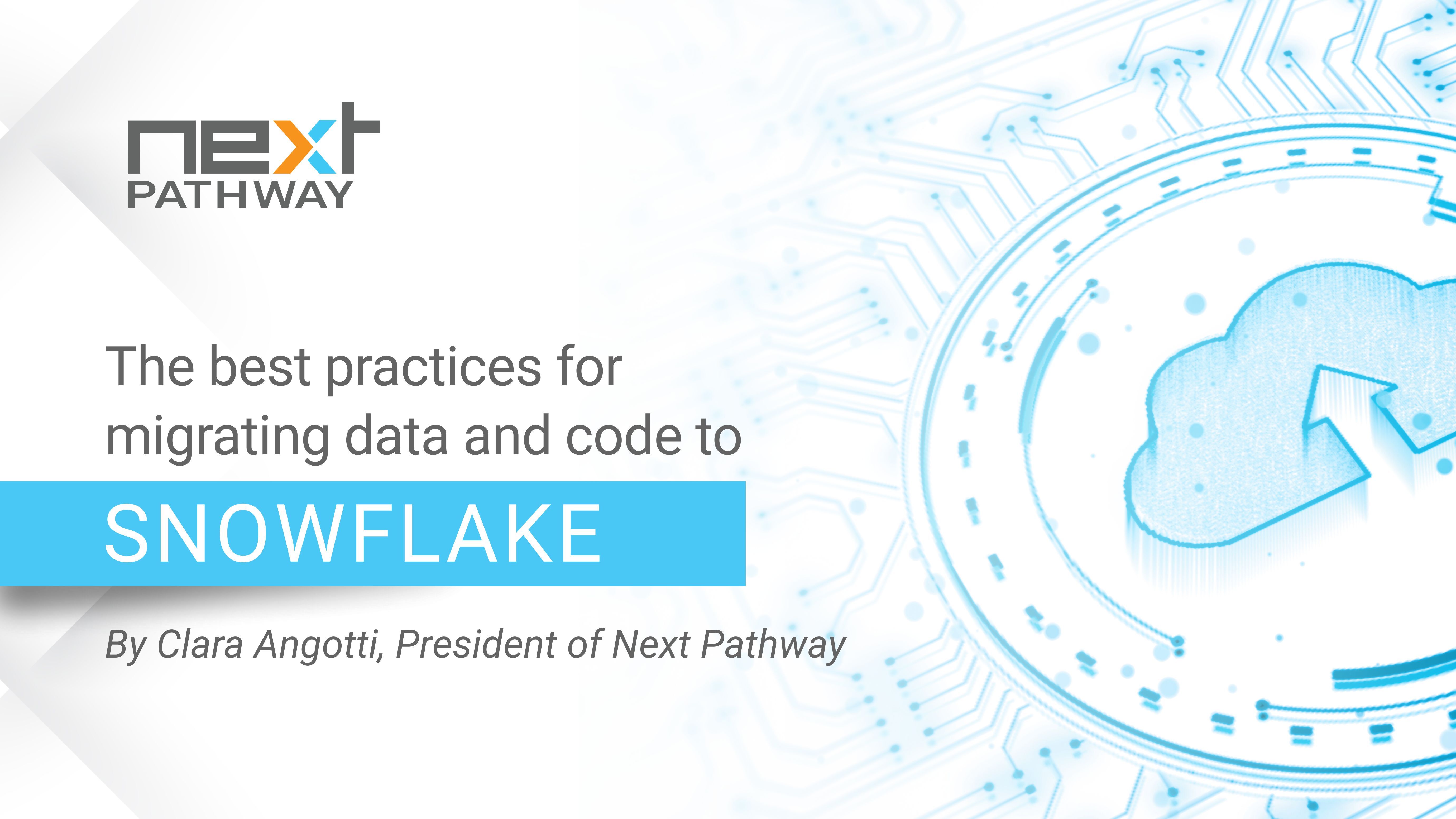
Businesses are constantly evolving and updating their processes to stay competitive. However, many organizations still rely on legacy applications that were developed decades ago. These applications can pose significant challenges, as they are often outdated and difficult to maintain, leading to high costs and limited functionality. In recent years, cloud data platforms like Snowflake have emerged as a solution for modernizing legacy applications. In this blog, we will explore the best practices for migrating legacy data and code to Snowflake and provide insights into how organizations can successfully navigate this process. I have summarized the 4 basic steps to migrating data and code to Snowflake.
Step 1 - Prepare Your Data and Code
The initial step for a successful migration to Snowflake is to prepare your data and code. This involves ensuring that all data is clean and free of duplicates, as well as verifying that code is up-to-date and optimized for the Snowflake platform. In addition, it's advisable to conduct an inventory of your data sources and map out any dependencies at this stage to ensure a seamless migration. This step is particularly crucial when reviewing your code. It is likely that your legacy applications have several data hops and integration points across multiple applications. This information is incredibly useful as it will inform the ‘migration waves’ by which you will translate code, ETL pipelines, and data. The migration waves will allow you to test in meaningful components and gain confidence that your plan is effective.
Step 2 - Use an automated tool to translate your code to SnowSQL
Code translation should never be performed manually – it takes too long and is prone to errors. There are tools on the market that can automate the code translation process.
Step 3 - Plan your data migration with a proof of concept to ensure the most effective approach
Snowflake offers a variety of migration tools that can help simplify the process of moving data to their platform. These include the SnowSQL CLI, which enables you to run SQL scripts against your data in Snowflake, and the Snowflake Migrator for BI tool, which can automate the migration of your BI reports and dashboards. These tools can help save time and reduce the risk of errors during the migration process. Before attempting your data migration, run a proof of concept to determine the most effective approach. Consider factors such as historical data loads, and a delta catch-up prior to launch.
Step 4 - Plan your testing early in the data migration process. Preparing for testing early will save valuable time
Ensure you have sufficient test data, test scripts and are executing the testing based on the migration waves established. Once your data and code are prepared and you have chosen the appropriate migration tools for Snowflake, it's time to turn your focus to testing to to ensure a successful migration. This involves running tests on both your data and code to verify that your applications are functioning as expected in Snowflake. This is also a good time to test any integrations with other systems to ensure that applications that are interconnected are also working in the Snowflake environment. Snowflake's zero-copy cloning feature can be especially useful here, as it allows you to create a clone of your database without duplicating any data, which can help you test your migration without affecting your production environment. As it pertains to your legacy applications, and in particular your code, the best tactic is to test in waves. This allows you to take an incremental approach, so that you are able to gain confidence in your migration and address issues as you translate code – as opposed to waiting for the entire migration to be completed, which can take months.
In summary, to ensure a successful migration to Snowflake, it's important to prepare your data and code specifically for the Snowflake platform, use automated code translation and data migration tools that are compatible with Snowflake, and thoroughly test everything before going live. Following these best practices can help ensure a smooth migration and minimize the risk of errors or downtime, allowing you to cut over to Snowflake quickly and cost effectively.
| Checkout Snowflake Migration Guide: How to Migrate to Snowflake 95% Faster?
About Next Pathway
Next Pathway is the Automated Cloud Migration company. Powered by Crawler360™ and SHIFT Cloud, Next Pathway automates the end-to-end challenges companies experience when migrating applications to the cloud. For more information, please visit nextpathway.com.
